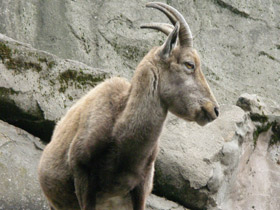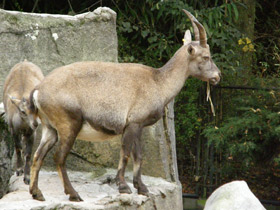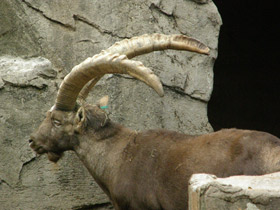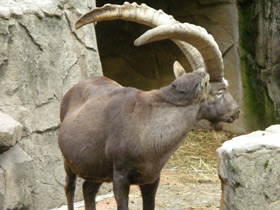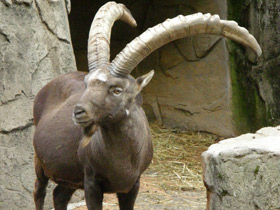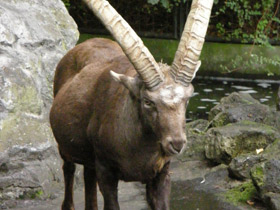The Alpine ibex Capra ibex
The Alpine ibex is a beautiful mountain ungulate living in the mountains of the European Alps at elevations of up to 3,500 meters above the tree line. Like other mountain goats, the Alpine ibex is an excellent climber which can masterly jump on the steep, inaccessible terrain. Interestingly, when Alpine ibexes go to waterholes to drink, or graze on dry grass, one of them always stands guard to warn other animals about potential danger. Ibexes are quite large ungulates: adult males, called bucks, can reach a body weight of 100 kg and shoulder height of 150 cm, while the weights of the females hardly ever exceed 40 kg. Curved horns of the males can grow up to over 1m. The horns play an important role in the rut season when solitary males join female groups. During this period, bucks fight for the right to breed with the females. The winner stays with the harem group until spring time and in June, each female gives birth to 1 or 2 (rarely 3) kids. Although if necessary, the fawns are able to follow their mother even in difficult terrain shortly after birth, they are usually hiding in shelters in the rocks for the first week of life and their mother comes to them for suckling. The fawns are not weaned until they are one year old. While sons leave their mother's herd after two years to join bachelor groups, daughters remain.
Today, the total population of Alpine ibex is estimated at 30,000 to 40,000 individuals but they could become extinct in the early 19th century. People have hunted the ibex for thousands of years because the bones, fur, blood, and even droppings of these animals were believed to have mysterious healing properties. By 1816, about one hundred of Alpine ibexes remained only in and around the Gran Paradiso and Vanoise Massif. The forester Josef Zumstein und naturalist Albert Girtanner managed to persuade the reigning persons to provide protection for the remaining animals. In 1854, King Victor Emmanuel II decided to protect the last ibexes. The King did not allow the exportation of ibexes from Italy and only in 1906, some of the ibexes were smuggled into Switzerland in an effort to reinstate ibexes in the Swiss Alps.

















